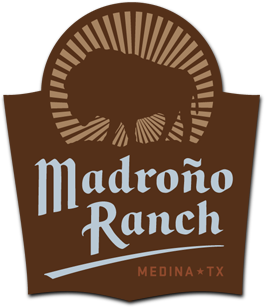Wallace Creek, which flows through Madroño Ranch, is named for Bigfoot Wallace, the legendary nineteenth-century Texas Ranger and Indian fighter who received a grant of 320 acres about five miles north of Medina in 1849. Wallace was celebrated as “the Daniel Boone of Texas,” and the stories of his exploits are plenteous and colorful. Some of them may even be true. Here’s a brief sampling:
William A. A. Wallace (1817-1899) weighed 13 pounds at the time of his birth in Virginia. He came west in 1837 to avenge the deaths of his older brother and cousin, who had been killed in the Goliad Massacre fighting against Mexico in the Texas Revolution; alas, the Battle of San Jacinto occurred before he left home, ending the conflict and eliminating, at least temporarily, his opportunity to “take pay out of the Mexicans.” When the schooner on which he sailed from New Orleans was caught in a violent storm, Wallace was the only person aboard, including the crew, who was not prostrated by seasickness; when they reached Galveston, he was the only one who did not have to be carried ashore.
In 1839, he unexpectedly came face to face with a Waco warrior on a narrow path on Austin’s Mount Bonnell. Without taking time to aim, Wallace fired the rifle he had been carrying and the warrior, mortally wounded, fell off the cliff and into the Colorado River.
In 1842, Wallace volunteered for the ill-fated Somervell and Mier expeditions into Mexico; he was captured and survived a stint in the notorious Perote Prison. After returning to Texas, he joined the Texas Rangers and fought in the Mexican War.
Wallace was the first man to carry the mail from San Antonio to El Paso. Once, having been forced to walk many miles after losing his mules to Indians, he stopped at the first house he came to and ate 27 eggs before heading on into El Paso for a full meal.
Are all these stories true? Probably not. J. Frank Dobie wrote that “Wallace was as honest as daylight but liked to stretch the blanket and embroider his stories”—and Dobie certainly knew a bit about blanket-stretching. In the end, though, the factuality of the stories is immaterial. To quote the editor in The Man Who Shot Liberty Valance, “This is the West, sir. When the truth becomes legend, print the legend.”
What we’re reading
Heather: Austin American-Statesman comics (it’s been a tough week)
Martin: E. O. Wilson, Naturalist

